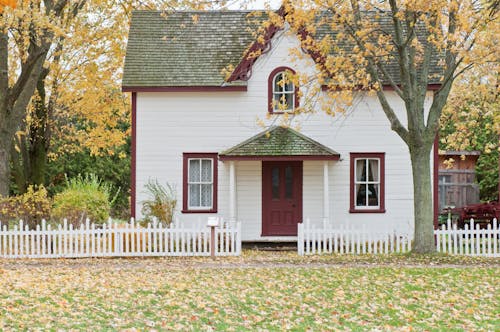Just like with your swimming pool, carport or garden shed, if you decide to build a fence on your property, you will need to follow a few rules.
What are the rules in your town? How to build a fence without encroaching on the neighborhood? We explain everything in this article, but let’s start by defining a fence.
Definition
Generally, the lands of homeowners are enclosed, that is, surrounded by fences. Therefore, a fence is mainly used to delimit the contours of one’s property. These can take on different aspects: vegetated, mesh, masonry, wooden.
Closing: do you need planning permission?
First of all, we advise you to find out about the Local Urbanism Plan. Indeed, the latter may require you to make a prior declaration and require a particular height, materials, and sometimes even a color for your project.
You must then inquire at your town hall or request a town planning certificate before starting your work.
Regarding your fence project, you will need to request an information certificate.
Note that you must make a prior declaration of work if your fence is in one of the following cases:
- The local urban plan imposes it,
- The height of the wall will be greater than or equal to 2 m,
- The land is located on the outskirts of a remarkable classified heritage site, a historical monument, a registered site (classified or awaiting classification), or an area defined by the municipality,
- The land is located in a housing estate.
If the land is aligned, it is necessary to inquire at the town hall to determine which authorizations and special rules are applicable. The alignment is the limit between the public road domain and property. A land-struck alignment indicates that the town hall may infringe on it to widen the road.
Do not infringe on neighboring property.
If this has not already been done, we advise you to restrict your land. This will allow you to locate the dividing line between your property and that of your neighbor. The fence must be against the dividing line without extending to your neighbor.
If your fence encroaches on the neighboring land, and it proves it, then he can demand its demolition by seizing the court.
However, you and your neighbor can decide by mutual agreement to install a fence located on the dividing line between your two properties. You will have to share the costs. Before installing it, you must establish a joint ownership agreement with the notary.
Do not disturb neighbors.
Your construction must not harm your neighbors: reduce the sunshine on its plot or present a danger (for example, barbed wire).
Respect certain distances.
If your fence is on the edge of a public road, there may be a minimum distance to respect.
Your fence may also be plant-based (trees, shrubs, natural hedges, etc.). In this case, if there is no local rule (PLU), the minimum distance to be respected about the neighboring land varies according to the height of your plantation:
- If the height of the planting is less than or equal to 2 m, the minimum distance to be respected at the border of the neighboring property is 0.5 m.
- If the planting height is greater than 2 m, the minimum distance to be respected at the border of the neighboring property is 2 m.
The distance is measured from the middle of the tree trunk.
Respect the right of way.
If there is a right of way on your property, you must ensure that you leave a passage for your neighbor. For example, you can add a gate.
Ensure compliance with the rules in a housing estate.
Housing estates generally impose precise rules to guarantee the district’s visual harmony. Fence construction may be framed.
Electric fences are often used to enclose pastures that meet specific regulations. They must hold an equipment approval certificate.
…







 In green, to bring a natural side to your exterior: the 6005 green color PVC blackout slat kit provides space for your exterior about a plant hedge while retaining the green and natural side of the garden. The color green is timeless when it comes to landscaping.
In green, to bring a natural side to your exterior: the 6005 green color PVC blackout slat kit provides space for your exterior about a plant hedge while retaining the green and natural side of the garden. The color green is timeless when it comes to landscaping. Milestones are events and activities used to monitor progress throughout the life cycle of a project. These key points serve as checkpoints for both the team working on the project and its stakeholders. Good milestones provide clear goals, highlight risks, and promote communication between teams.
Milestones are events and activities used to monitor progress throughout the life cycle of a project. These key points serve as checkpoints for both the team working on the project and its stakeholders. Good milestones provide clear goals, highlight risks, and promote communication between teams. hey have all these big ideas and they want to get them out on the market right away. They move too fast and don’t plan ahead thinking more about what will happen after they launch the product rather than how or if they should even start it in the first place. When something fails with no proper planning behind it, you can expect that people will lose interest quickly and something else will come along that is bigger and better. However, this doesn’t necessarily mean your team isn’t doing its best.
hey have all these big ideas and they want to get them out on the market right away. They move too fast and don’t plan ahead thinking more about what will happen after they launch the product rather than how or if they should even start it in the first place. When something fails with no proper planning behind it, you can expect that people will lose interest quickly and something else will come along that is bigger and better. However, this doesn’t necessarily mean your team isn’t doing its best. The weather is getting warmer in the northern hemisphere, which means that more people are thinking of spending time outside on their decks. As some of you may know, I’ve been sharing my experiences and tips about
The weather is getting warmer in the northern hemisphere, which means that more people are thinking of spending time outside on their decks. As some of you may know, I’ve been sharing my experiences and tips about  Entering winter With our home on a hill, the septic tank is located at the back of our property. In order to reach it you have to go around the house and that’s why we decided not to put any decking in this part of the area. Instead, there are two large stepping stone areas that we covered with black pavers and then surrounded them with some gravel:
Entering winter With our home on a hill, the septic tank is located at the back of our property. In order to reach it you have to go around the house and that’s why we decided not to put any decking in this part of the area. Instead, there are two large stepping stone areas that we covered with black pavers and then surrounded them with some gravel: